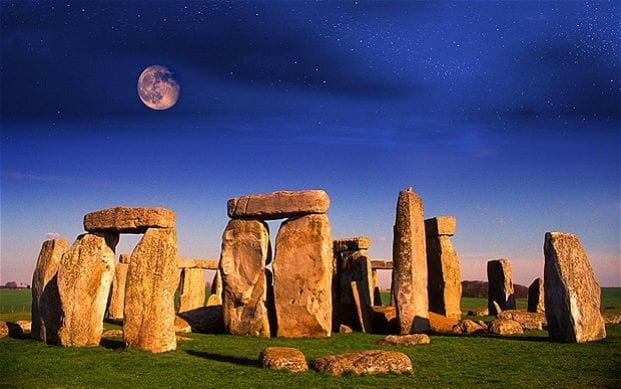Stonehenge was built as part of a fertility cult with the stones positioned to cast phallic shadows inside the monument during Midsummer, a new study suggests.
Archaeologist Professor Terence Meaden, examined nearly 20 stone circles throughout Britain, filming their changing silhouettes during sunrise on ritually significant dates of the year.
Experts already knew that the 6000-year-old Neolithic monuments were aligned on the solstices, but it is the first time it has been suggested that the orientation of the stones was specifically designed to create a ‘moving spectacle.’
Prof Meaden said the builders of Stonehenge, and other megalithic circles such as Avebury, had created a ‘play without words’ in which one special stone cast a growing phallic shadow which penetrated the egg-shaped monument before hitting a central ‘female’ stone symbolising fertility and abundance.
The circular shape of the monuments allowed the same ‘play’ to recur at important dates in the Neolithic farming calendar throughout the year, he believes.
“My basic discovery is that many stone circles were built at a time of a fertility religion, and that stones were positioned such that at sunrise on auspicious dates of the year phallic shadows would be cast from a male-symbolic stone to a waiting female-symbolic stone,” said Prof Meaden.
“At Stonehenge on days of clear sunrise the shadow of the externally sited phallic Heel Stone penetrates the great monument in the week of the summer solstice and finally arrives at the recumbent Altar Stone, which is symbolically female.
“Devised in the Late Neolithic this could be a dramatic visual representation of the cosmic consummation of the gods between a Sky Father and the Earth Mother Goddess.”
Prof Meaden also discovered that a similar light show happens at Drombeg Stone Circle in County Cork where he spent 120 days photographing sunrise at the site, over five years. He found that the ‘fertility play’ occurs on eight dates throughout the year, starting on the winter solstice.
He believes that those eight dates represent important milestones in the farming calendar, which include the solstices – the longest and shortest days of the year – and the spring and autumn equinoxes, when day and night are the same length.













